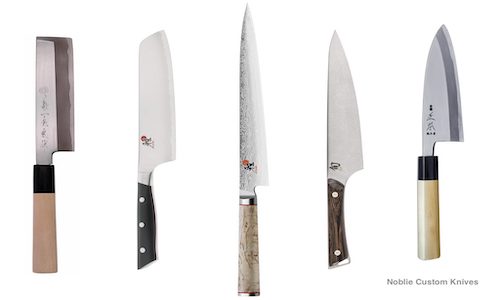
With so many brands and types of kitchen knives on the market, it’s easy to get overwhelmed when trying to find the right one. Every company claims their knives are the best, making it hard for consumers to make the right decisions. So how can you choose the best kitchen knife for your needs?
Types of Kitchen Knives:
1. Slicing Knife: Ideal for slicing vegetables and soft meats. It is not suitable for frozen foods or hard-skinned fruits.
2. Cleaver: Used for chopping bones and harder ingredients.
3. Multipurpose Knife: Can be used for both chopping and slicing, but is less sharp than a dedicated slicing knife. It’s not ideal for cutting large bones but works well with chicken, duck, fish, and small bones. It can also be used for mincing meat.
4. Fruit and Vegetable Cut Knife: Designed for cutting fruits and vegetables.
5. Other Specialty Knives: There are also knives for specific uses, such as frozen meat knives, bread knives, and multi-purpose knives.
How to Choose a Kitchen Knife:
1. Sharpness
The most important feature of a kitchen knife is its sharpness. A durable, sharp edge makes all the difference. Sharpness depends on several factors:
- Material: The steel used for the blade determines the knife’s hardness. While harder steel can be sharper, it can also be more brittle or other words, easy to break. The balance between hardness and toughness is key to a quality knife.
- Edge Grinding: Knives are either machine-ground or hand-ground. In general, knives with a higher hardness, smaller edge angle, and a smoother curved edge are sharper and better for slicing. Slicing knives are typically sharper than cleavers due to the smaller edge angle.
2. Comfort
A comfortable handle is essential for chef`s use. Common handle materials include wood, plastic, and steel, each with its advantages and comfort. Stamped knives often feature more refined handles, while traditional forged knives usually have wooden handles, although some manufacturers are now offering other handle materials for aesthetics.
3. Safety
The knife handle should have a non-slip design to prevent accidents. This is a basic requirement for any quality kitchen knife.
Some Tips:
- Always clean knives after use to prevent food from sticking and causing rust. After washing, dry the knife immediately. If you won’t be using it for a long time, consider applying a light layer of cooking oil to prevent rust.
- Use different knives for different tasks to extend their lifespan and durabiltiy.
- Store knives in a safe, high place to avoid accidents, especially if children are present. Don’t hang knives on the wall, as hooks can loosen and cause the knife to fall, which potentially leads to unwanted injury.
At Chefcoca, we offers a variety of high-quality kitchen knives, from slicing knives, butcher knives, boning knives, bread knives to cleavers, ensuring you find the perfect tool for your cooking needs. Our knives combine durability, comfort, and safety, all at competitive prices. Besides, Chefcoca also bundle sells necessary knife accessory to help your kitchen build with durability and confidence.


